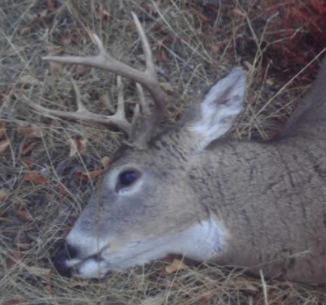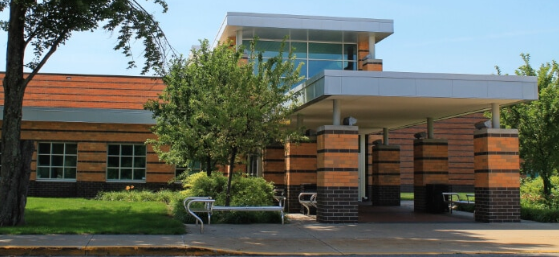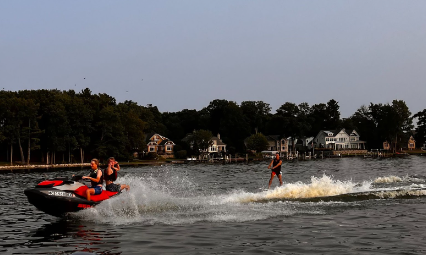Hunting is in a decline

December 11, 2021
After waiting for so long, 10-year-old Owen Yager was finally ready to get his first hunting license. With his dad next to him, he was eager to hunt down his first deer. Now a sophomore, Yager has had lots of experience hunting. Over the last year, Yager has gotten two universal tags and his first 8-point buck. Yager is one of the few hunters his age who still have interest in the sport.
Hunting has declined in popularity over the last decade not only in Michigan but all over the country. Between the 70s and into the 90s, Michigan was selling licenses to as many as 1.2 million hunters. In 2018, that number decreased to less than 657,000. The decline can be traced to multiple factors.
The baby boomers that have fueled the sport for so long are aging out and many are no longer participating. “The decline in hunting has stemmed from the decline in participation in the baby boomer generations who are aging out of hunting and make up the largest cohort of current hunters,” Hank Forrester, director of the Alabama-based Hunting Heritage Foundation, told Fox News. The new generation of young adults and even millennials have lost interest in deer hunting and have turned to other activities such as parties, shopping, and social media. “Later generations weren’t recruited into hunting at the same rate as the boomers, and a lot of that probably has to do with the urbanization in the U.S.”
Suburban areas of Michigan are increasing in population. Every month more and more houses or apartments are being built. As the population continues to increase, many communities are forced to build new homes such as downtown Holland which will soon be home to two new apartment buildings.
More rural areas of the state bring in the most hunting attention due to the spacious land and the abundance of deer. Unfortunately, many people have chosen to reside in suburban areas. Cities provide more employment opportunities and higher quality homes and roads. Since suburban areas don’t have the space to hunt as rural communities do, interest in the sport has declined tremendously. According to Scott Levin, a data journalist for MLive, in 2018, for every 1,000 residents in Ottawa county, only 70.8 owned a hunting license. However, in Ontonagon County in northern Michigan, for every 1,000 residents, 281.75 owned a hunting license.
Shifting demographics in the nation play a big role in the decline as well. Studies show that over 70% of the hunting population are men and more than 90% are Caucasian. This constitutes the stereotype that hunting is a “middle-aged white-guy thing.”
According to the U.S. Census projections, by 2044 Caucasians will make up less than half the U.S. population. Because the overall population of hunters are predominantly Caucasian, and the diversity in America is increasing, the popularity of hunting will continue to decrease.
The decline also correlates with the decline in American gun owners. Over the last couple decades, the population of gun owners has dropped significantly. According to an article titled There are now more guns than people in America written by Sarah Frostenson, in 1977, half of American homes owned a gun. By 2014, that number dropped to just 31%. In Michigan, there are only 4.3 guns for every 1,000 residents. This can relate to the decline in hunting popularity in younger generations. millennials are less likely to have grown up in a household with a gun “which means they are less likely to have been exposed to hunting as a child and less likely to consider it as a recreational activity when they reach adulthood,” Julie Mack, a Michigan State graduate and reporter for MLive’s Public Interest Team wrote.
The steep decline in the hunting population has led to an effect in the deer population. Whitetailed deer are overpopulating regions across Michigan. Deer are seen everywhere along the side of the road and even in peoples’ backyards. “In 2018, deer accounted for one of every six vehicle accidents in Michigan — more than 53,000 collisions, including 14 deaths,” MLive wrote. A West Ottawa student has experienced deer overpopulation firsthand.
After getting breakfast, Jr. Cam Lachtrupp was driving home on Lakewood Boulevard. The street was dark so he couldn’t see much ahead of him. Suddenly, in his peripherals, he saw something move. He turned his head to the left to discover that it was just a deer. However, when he turned his focus back to the road, another deer had run onto the road from the right. “When I saw what it was, it was too late and I saw and felt the deer hit my car on the corner of the hood,” Lachtrupp said.
Jr. Nash Bosma has his own thoughts on the abundance of deer in the neighborhood. “My mom is always complaining about deer eating her hostas every night,” Bosma said.
The overpopulation has also affected biodiversity and put other species at risk. Deer consume large amounts of resources, reducing the availability of grass and foliage not only for their own species but also for the other animals that depend on these plants for survival. The forest floor which was once covered in ferns, flowers, and bushes is now full of dirt, sticks, dead leaves, and nothing for many species to eat, causing animals to starve.
Furthermore, deer have recently been major carriers of disease, which spread easily to other species with more controlled populations. Deer carry a fatal, neurological illness called Chronic wasting disease (CWD). CWD is a contagious disease that can be transmitted freely within and among cervid populations. The deadly illness can be transmitted directly through animal-to-animal contact, and indirectly through contact with objects or environments contaminated with infectious material including saliva, urine, feces, and carcasses of CWD-infected animals.
To combat these issues, hunting needs to increase in popularity. If more people choose to hunt, drivers will be safer, the biodiversity can balance out, and dangerous diseases will stop spreading. To help increase popularity and regulate the deer population, The Michigan Department of Natural Resources has encouraged more people to invest in hunting permits. However, the population continues to rise. According to The Emerald View at Boston university, “Over 561,000 deer were harvested within the hunting season of 2019, out of that year’s deer population of 1.75 million.” Although hunting has helped slow the rate, the deer population continues to increase outside of hunting season yearly.
It’s important that the population of hunters increases to help deal with the overpopulation of deer not only in Michigan but across the country. The good news is that hunting may gain popularity which will help slow down the increasing population of deer. The Michigan DNR believes that the 2021 hunting season will be more successful than recent years. The food production is not as abundant as last year meaning the deer won’t starve. Changes to the regulations have also been made in the lower two-thirds of the peninsula. Allowing antlerless deer to be taken has offered more opportunities for successful hunting trips. Finally, because CWD has been detected all over the state, hunters are recommended to get their deer tested.












